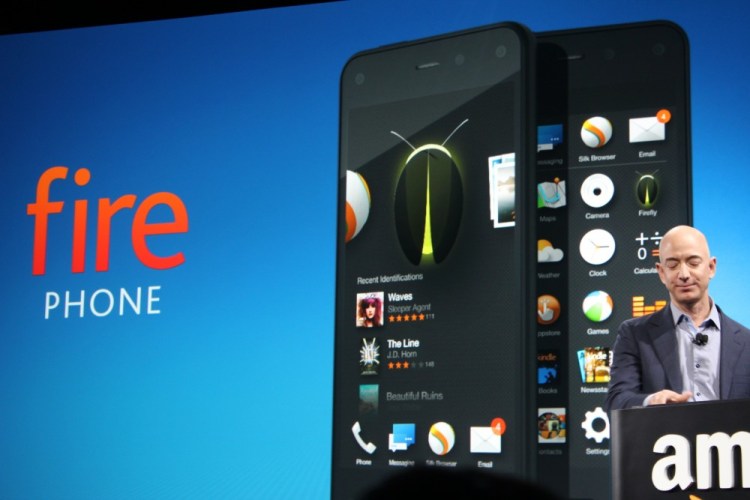After taking a beating from critics and consumers on its first foray into smartphones with the Fire phone, Amazon has decided to focus its efforts elsewhere.
The company has very recently released a group of engineers retained to work on phones, according to a report from the Wall Street Journal Wednesday evening.
Those engineers worked at Lab126, Amazon’s super-secretive hardware development shop in Silicon Valley, the WSJ reported, citing “people familiar with the matter.” Amazon is said to be scaling back or discontinuing several other high-ambition projects at Lab126, including development of a large-screen tablet.
It’s unclear exactly how many people from the division’s 3,000-person headcount were laid off, the WSJ pointed out. Lab126 is also restructuring itself, and combining certain groups, the report said.
Amazon’s phone was introduced at a splashy media event in Seattle in June 2014. Not long after the event, the negative reviews of the device started coming in (read our review here). The Fire was a well-built device, but sported a set of features that were exotic but not very useful.
Many of the features of the new phone, predictably, were aimed at shopping at Amazon. For instance, the Firefly app provided users with links and options for buying items the phone’s camera saw or heard in the real world.
It wasn’t hard to see the writing on the wall for the Fire Phone. With its high-end price ($650 retail or $200 on contract), exclusivity to AT&T, and lack of essential features (Amazon’s “3D-like” interface was pretty much a gimmick), the Fire Phone was a tough sell from the beginning.
By October of last year it was estimated that Amazon had sold just 35,000 Fire phones. The company said in a Q3 2014 earnings call with investors that it was taking a $170 million write-off related to lower-than-expected sales of the device.
Interestingly, as late as December 2014, Amazon was still working on the follow-up to the first Fire phone. At the time it had gone back to the drawing board (as one source put it) and was trying to come up with an attractive feature set for the device. But, our sources said, Amazon would not release the new model until 2016.
If the reports today are correct, the Fire phone has been removed from the drawing board and placed in the trash can — a merciful death for one of the biggest smartphone flops in recent memory.


